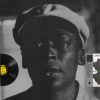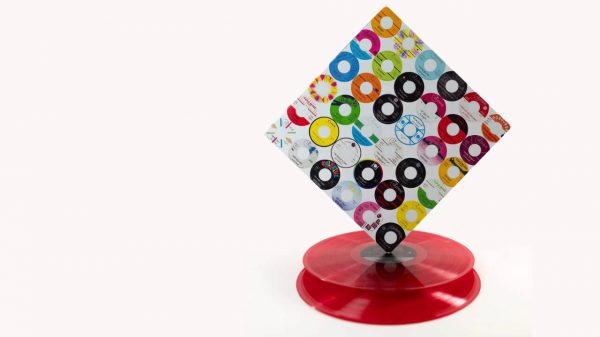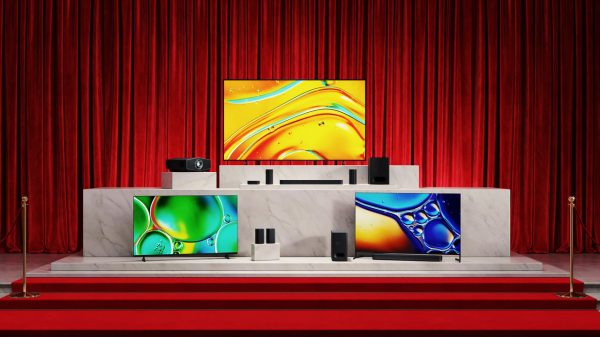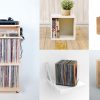Sony’s MDR-7506 is arguably the most popular studio headphone in the world. If you survey broadcasters, studio professionals, and content creators, chances are high they own and use or have owned and used the MDR-7506 at some point in their career. The older among them will likely remember starting out with the Sony MDR-V6 and then transitioning to the 7506 in the early 90s.
For a headphone model to have lasted from 1991 to today, with no sign of stopping 33 years later, is a testament not to greatness in any one aspect, but to “good enough” in all facets of its use. It did leak some sound while recording, but its isolation was good enough. The coiled cable was frustrating at times and required some soldering to replace when it got damaged, but again: good enough. It was lightweight so comfort was good, and yet it was durable enough to withstand the rigors of studio life. And if it did break beyond repair, it was only $99 USD to replace it with another pair.

Once you know the MDR-7506’s sonic signature – slightly elevated vocals and treble and rolled-off lows – it provides good enough sound quality that one can use them for just about any studio task. In the vocal booth, as a monitor for guitarists and drummers, or even in the control room, the MDR-7506 is at home anywhere in the studio. The 7506 was not (and is not) a perfect headphone, but it provides a lot of good qualities which have kept it in widespread use for over three decades. Is there room for improvement? Of course. And that’s why Sony released the MDR-M1 ($249.99), a closed back, over-the-ear studio headphone for those who want more than “good enough.”

A Brief History of Sony’s Studio Headphones
Of course, the MDR-7506 and MDR-M1 aren’t Sony’s only entries in their MDR (Micro Dynamic Receiver) line of studio ‘phones. In 1993, Sony released the MDR-V600 for DJs who wanted a bit more bass and a rotating ear cup which made it easy to listen in to room sounds. The MDR-7509 (2001) and 7509HD (2011) were offered as an upgrade to the 7506 for those who wanted a more accurate frequency response. But none of these models have enjoyed the longevity of the 7506.
In 2023, we saw the release of a new open-back monitoring headphone from Sony, the MDR-MV1 which addressed one of the complaints about the 7506 which was that it lacked a realistic soundstage and didn’t image as tightly as mastering engineers would have liked. While creating the MV1, Sony also addressed some other frequent complaints. The coiled cable was replaced with a removable straight cable, and bass depth and quantity was improved since music today has a lot more low-end emphasis than what was being produced in the late 1980s when the MDR-7506 was designed.
So, as of 2023, Sony had a headphone that addressed some of the shortcomings but wouldn’t work for recording artists due to its open back bleeding sound into the recording mics. For this reason, the 7506 has soldiered on in the booth while the MV1 took over behind the mixer in some cases. A Japan only release, the MDR-M1ST brought some of the MV1 characteristics into a closed-back model including a much lower impedance and removable cable, but retained some of the characteristics of the 7506 including the vocal forward presentation and stage size. The MV1 was significantly more expensive ($279 in the US, when you could find them) so the MDR-M1ST did little to displace the 7506 in most studios.
Meet the New Boss
A few weeks ago, we saw the introduction of a new studio headphone from Sony that will likely succeed the MDR-M1ST, and may even supplant the venerable 7506 for those willing to up their investment: the Sony MDR-M1.
Externally, the M1 is a closed-back headphone that retains nearly all the styling cues from previous models while lowering the weight slightly and redesigning the cups for better isolation and better low-end performance. The coiled cable is gone with a new jack and screw-in lock system on the left cup and two cables provided (both a 1.5 meter and a 2.5 meter cable, neither of which is coiled). Pads and headband are also improved which makes them both more comfortable and better isolating. As with all MDR studio headphones, the earcups for the M1 are available ala carte and are easy to replace.

Internally, the driver on the MDR-M1 is similar to that of the MV1 and M1ST, but it’s tuned specifically for the M1. It includes that previously mentioned vent to allow tones as low as 30Hz to be heard and tones below 20Hz to be felt. Sony claims a frequency range of 5Hz – 80kHz which is well beyond the range, not only of human hearing, but also of most testing equipment, including mine.
Nominal impedance on the M1 is 50Ω with a sensitivity of 102 dB/mW which makes them a touch harder to drive than the MV1 but a touch easier than the original 7506. I had no trouble driving the M1s with desktop or portable gear, my Android phone and a variety of dongle DACs and even a laptop so it should be right at home regardless what device it’s plugged into. Both cables come with 3.5mm (1/8″) jacks with the longer one providing a ¼” thread-on adapter that also works on the shorter cable.

Pads and headband are vegetable “leather” with memory foam inside. These are quite comfortable although they do get somewhat warm on-ear after an extended listen. Pads are easily replaceable so aftermarket options will likely be available in differing materials for even better isolation or greater comfort. The size adjustments on the steel reinforcement bands are tactile and well marked. This allows users to remember their number and reset shared headphones to the same size every time for higher consistency and greater comfort.
Left and Right are well marked on the outside of the M1’s headband which is appreciated, and cups fold flat when not in use for easier storage. Sony does not provide a case, nor does the band itself fold, which some will lament if they travel extensively with their headphones. Some third party travel cases for the MDR-7506 already claim compatibility with the M1 so a good inexpensive travel case should be easy enough to source.
Sound Notes
Sony collaborated with mastering engineers Mike Piacentini of Battery Studios NY and Akihiro Nishimura (formerly with The Power Station) on the tuning of the MDR-M1. The result is a headphone with a tonal balance that is very similar to the sound of speakers in professional studio control rooms. The stated goal was to create an accurate reference point so the sound of the final product will match what was heard in the studio.
Sub-bass depth is very good with notes heard into the mid 30Hz range and felt below that which is a definite improvement over the 7506. Mid-bass textures are improved as well with a good balance of detail and weight. The lows was always my biggest complaint with the 7506 as they lacked weight below about 70Hz. The M1 is a definite improvement in this regard and does a good job of balancing big bass when called for, and a natural presentation when low frequencies are not the star of the show.

Lower-mids transition cleanly from the lows without noticeable bleed or bloat and lower voices sound natural with enough weight to sound full but not so much as to feel thick. Guitar has good growl and rasp as well and overall the mids sound a bit more detailed than the 7506. Strings have good energy albeit not quite perfect (these are a $250 headphone, after all). Upper-mids don’t have the elevation found in the earlier model either which helps make upper vocals less strident and more natural sounding. I also found higher and lower vocals to stand on the same plane making duets a bit more believable as well.
The biggest change is to the treble where detail is improved but overall level is dropped a bit compared to the 7506 tuning. This results in a much more linear overall signature. Lower-treble has good detail, which gives snare drums a crisp and solid rattle. Cymbals have good energy and nice detail as well. Moving up into the true treble, that detail and sparkle carries through, keeping the M1 from sounding confined.
Stage is well proportioned but not particularly large as is expected in a closed back design. Seating the orchestra is straight forward with no large gaps or misplacements. Instrument separation and Imaging are solid with movements easily tracked and positions tightly defined.

The Bottom Line
There is an old saying that goes “Perfection is the enemy of good.” That concept Sony seems to have understood when they released the MDR-7506 back in 1991. They were – and continue to be – good headphones for studio use. Their build quality is good, sound quality is good, and their price point is good. That combination has resulted in the 7506 becoming one of the most commonly found headphones in all aspects of production, be it music, movies, radio, or TV.
Thirty three years later, Sony hopes to capture that same magic in the MDR-M1. It builds on the legacy of the MDR-7506 with improved sound, better ergonomics, and greater comfort. Just about every criticism that has been leveled against the 7506 has been addressed in a meaningful way in the MDR-M1. The MDR-M1 takes significant steps toward being a perfect mastering headphone and while the 7506 has been “good enough” for over 30 years, the MDR-M1 is enough better that it will likely encroach on the market share of its older brother. I have a feeling we’re going to see a lot of second hand 7506 headphones arrive on the market soon as studio professionals who want more than “good enough” upgrade to the new standard.
Pros:
- More neutral, more detailed sound than the MDR-7506
- Excellent bass definition and extension
- Replaceable cables and earpads extend usable lifespan
- Excellent sound isolation and comfort
Cons:
- A bit expensive compared to the MDR-7506
- Can get a bit warm with extended listening
- Lacks imaging width and air (common for closed-back design)
- Not very portable, no case included
Where to buy:
Related Reading:








































Old Cob
October 23, 2024 at 1:30 pm
much preferred the (cheaper) AKG K361 in the studio for both tracking and mixing. The MDR-M1’s low mids and upper bass are a little too bloated for me!
The MDR-M1 is definitely more comfortable with better build quality.